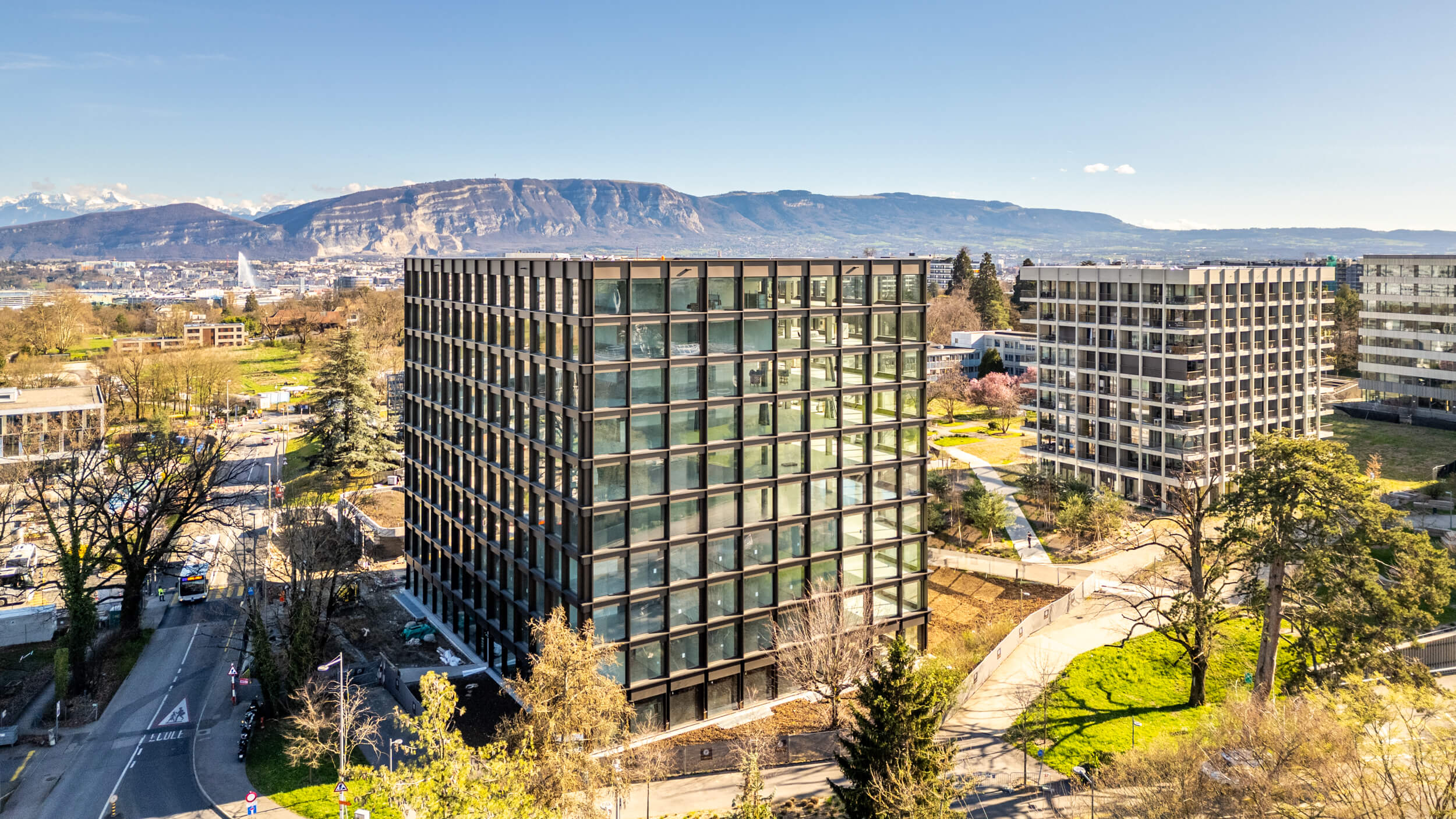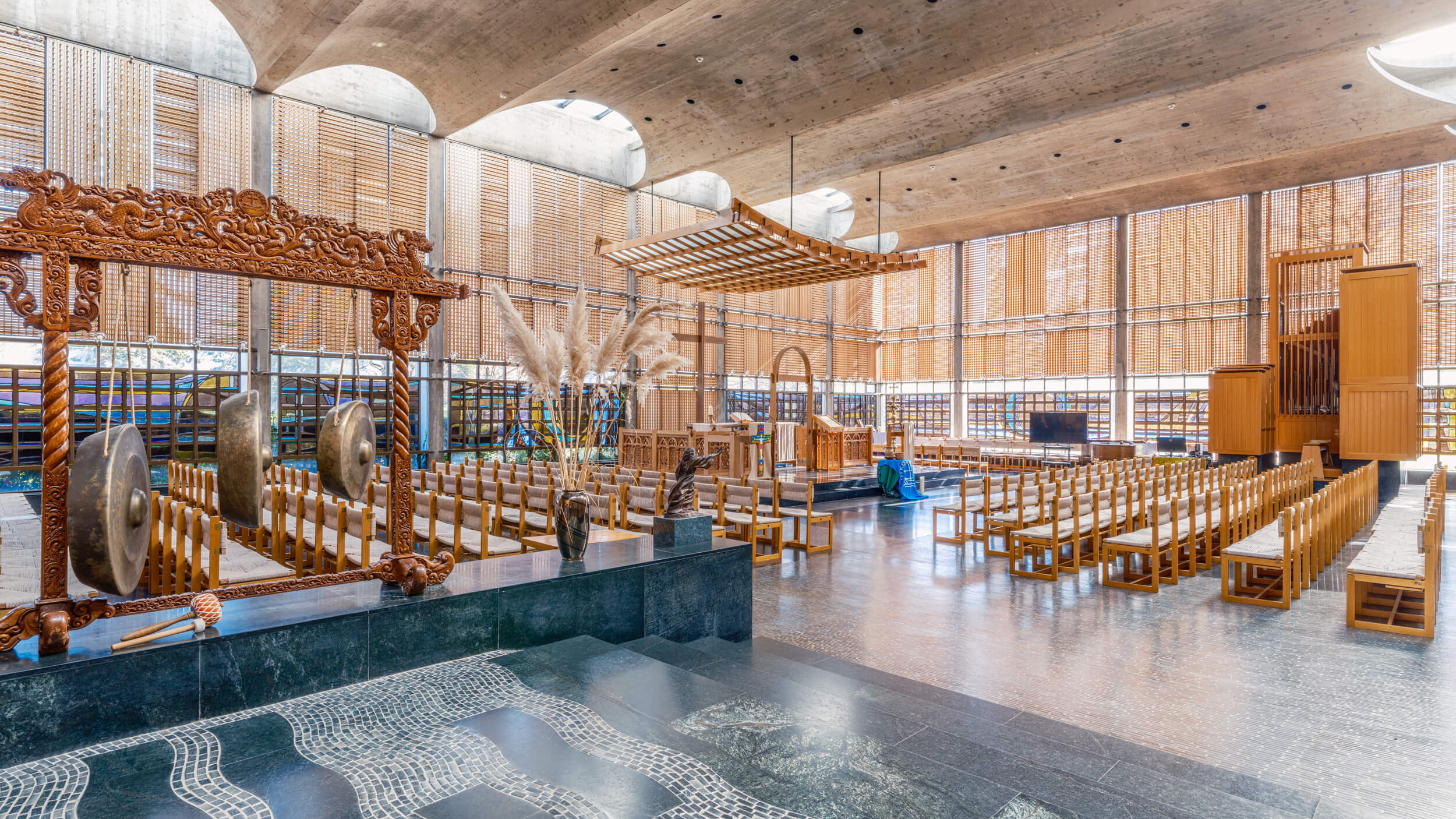The SEED approach provides certification for sustainable neighbourhoods with the aim of reducing the ecological footprint and CO2 emissions, and promoting and regenerating biodiversity. It guarantees quality living environments that are inclusive and adapted to future climate conditions.
Green Village is a neighbourhood that puts its commitment to the future of the planet at the heart of its concerns. In parallel with the One Planet Living initiative, the project is the first neighbourhood in Geneva to be certified SEED, next generation living, and to respect its six founding principles. Sarah Schalles, Director of the Swiss Association for Sustainable Neighbourhoods, explains what SEED stands for and how Green Village fits into this programme.
1. Could you tell us about the history and concept of the SEED approach?
The SEED approach originated in 2005, when WWF Switzerland started thinking about the future of sustainable neighbourhoods. In 2010, this initiative led to a collaboration between Implenia and WWF. In 2018, after eight years of joint work, the Swiss Association for Sustainable Neighbourhoods was founded by these two players in collaboration with other organisations.
The SEED, next generation living approach was developed by the Swiss Association for Sustainable Neighbourhoods, following on from the One Planet Living (OPL) approach led by Bioregional. SEED is a unique, independent approach based on six core principles. Its mission is to reinvent real estate by designing sustainable neighbourhoods based on respect for the environment and the well-being of their inhabitants. The aim is to reduce the ecological footprint of urban areas, in line with the planet’s available resources and taking into account future climate conditions. SEED has a methodology that guarantees the sustainability of neighbourhoods, offers differentiated investment models and encourages innovation and exchange by linking certified neighbourhoods.
2. What are the main principles of SEED? Can you give us a few examples of certified projects?
SEED is based on six key principles for redeveloping urban areas, using measurable performance targets:
- Climate protection through efficient energy consumption, sustainable transport and low carbon footprint living and working spaces.
- Regenerating biodiversity through outdoor landscaping that preserves local flora and fauna, functional ecology and sustainable water management.
- The circular economy, i.e. the responsible and supportive management of resources, based on short circuits and optimised material flows, as well as reuse and recycling.
- Shared governance, to ensure that neighbourhood life is participatory and inclusive, and that all stakeholders work together towards commitments to social responsibility and solidarity.
- An attractive quality of life, thanks to a pleasant living environment that ensures the health, well-being and accessibility of individuals, both indoors and out.
- Culture, through the conservation of existing heritage, a strong neighbourhood cultural and artistic identity, and local food production.
Today, two pilot projects have already been launched alongside Green Village: the “Ancienne Papeterie” district in Marly in the canton of Fribourg and the “Orbe Sud” district in the canton of Vaud. These three sites, all of which are partially operational, provide us with welcome feedback: our approach is evolutionary and must adapt to local realities, without losing sight of innovation.

3. How is the SEED approach integrated into the development of a neighbourhood like Green Village?
As the name suggests, the idea is to plant a seed at the very beginning of future sites. Initially, an analysis of the prerequisites is carried out to ensure that the certification process is not doomed to failure. If this stage is validated, an action plan is drawn up and a multi-party agreement is signed between at least the project owner, the municipality where the district is to be built and SEED. From then on, the stakeholders work together to bring the project to fruition, so that it is fully in line with the six principles mentioned above.
The first certification takes place at this point. It is then renewed during each phase of the project, and then in the operational phase, which ensures continuity and encourages innovation and the maintenance of very high sustainability standards. SEED’s role is to support the development of the district via its integrators, i.e. the people responsible for gathering the data and supporting the contractors to ensure that all the criteria are met. We also work with professors specialising in the various fields, from four Universities of Applied Sciences and Arts, who act as independent reviewers and give their opinion on the measures implemented.
Maintaining SEED certification is made possible by a system of fees paid by all current and future residents of the district, whether private individuals or businesses. Two-thirds of these fees go to a fund dedicated to on-site activities – in particular, the organisation of sustainable development training courses and the promotion of neighbourhood and intergenerational exchange – and to the ongoing adaptation of the building and its landscaping to the challenges of climate change. The remaining third is involved in the process itself.

4. In your opinion, how is Green Village innovative in terms of sustainability?
Green Village is an excellent example of SEED’s approach to integrating a neighbourhood project. The partnership between Implenia, the municipality of Grand-Saconnex, the World Council of Churches and SEED has led to a number of innovations.
In particular, I’d like to highlight the circular economy in construction, with specially developed management and reuse of site waste, and respect for heritage, with the meticulous renovation of the Ecumenical Centre and the restoration of the Brugger Garden. Among the environmental measures, numerous efforts have been made to preserve flora and fauna, including the creation of passages for small animals. In addition, the presence of public transport, which will be reinforced in the future with the arrival of the tramway, and easier access by bicycle place Green Village at the heart of soft mobility. In general, the district is in line with all six principles and will be exemplary from an environmental and social point of view.

5. How do you see the future of certification and its importance for sustainable development?
It may come as a surprise to you, but my hope is that certification will disappear in the foreseeable future: at the moment, it goes further than the legal framework and provides real added value in terms of respect for the planet, a crucial point when you consider that the property sector is responsible for a quarter of CO2 emissions in Switzerland. If legislation is strengthened and brought into line with our requirements, our objective will be achieved: the efforts we are making today will have become the norm, and new neighbourhoods will be obliged to set an example. The approach developed by SEED could then support stakeholders in achieving the objectives set out in the legislation.
Before these hopes become reality, we are taking advantage of feedback from current projects. The support we receive from our teams, especially from Implenia for Green Village, provides us with numerous opportunities for improvement and innovation in our procedures and requirements – a highly motivating shared learning experience on a daily basis!
